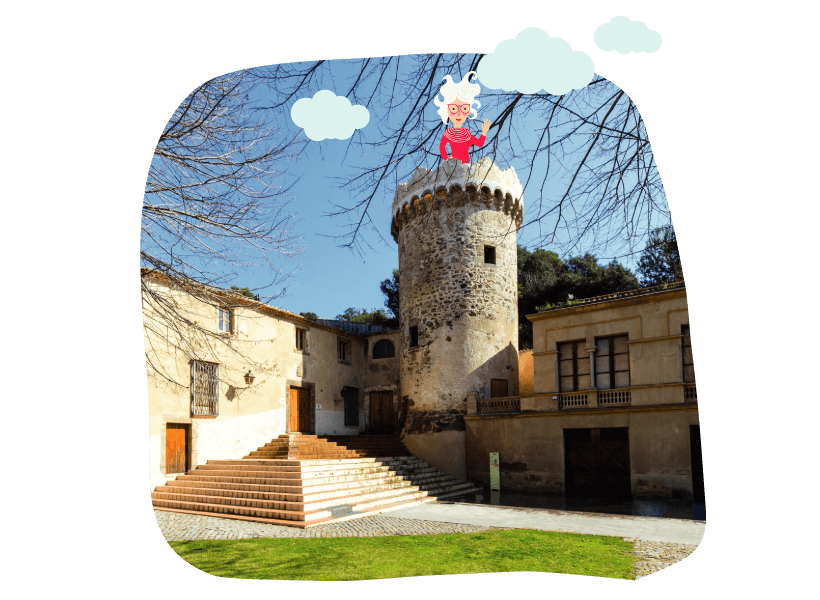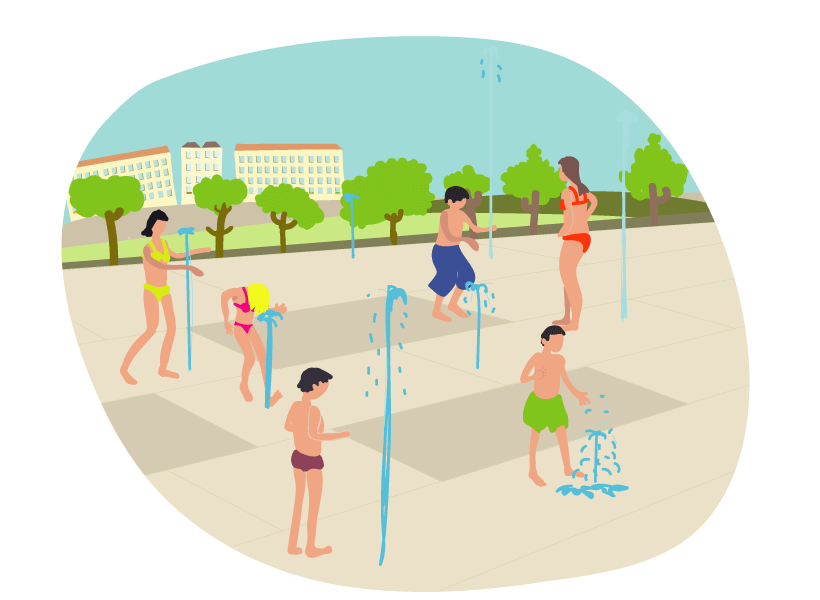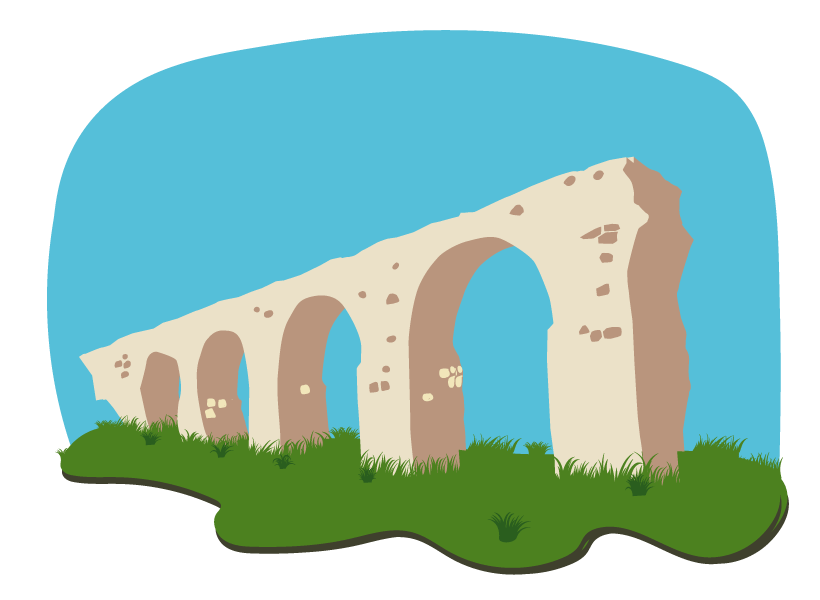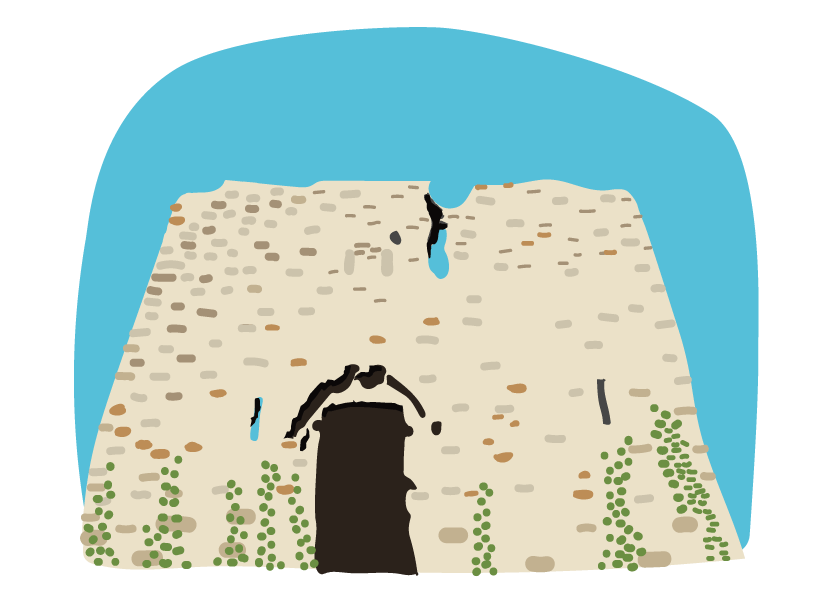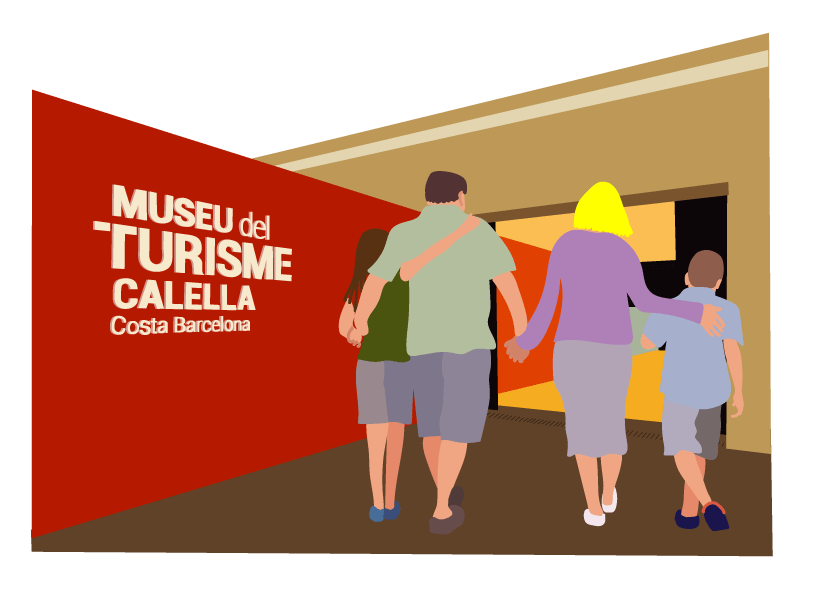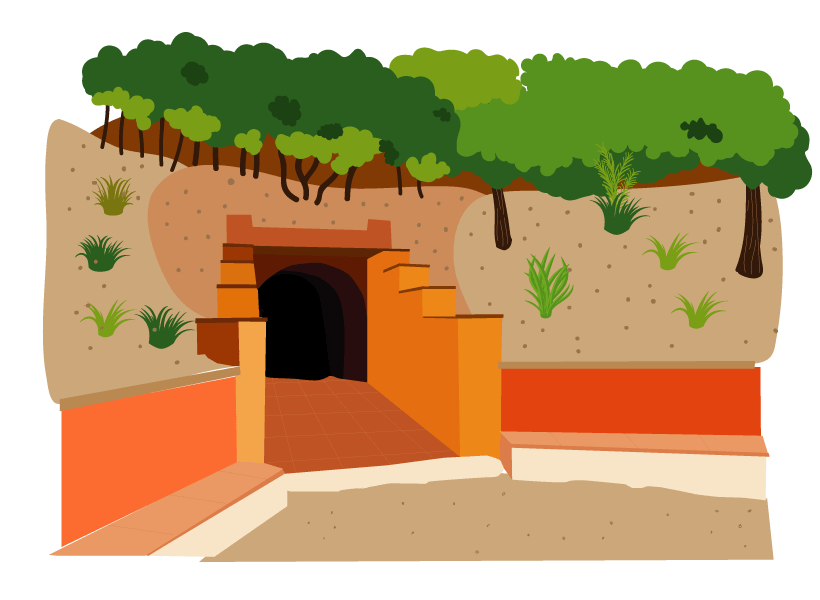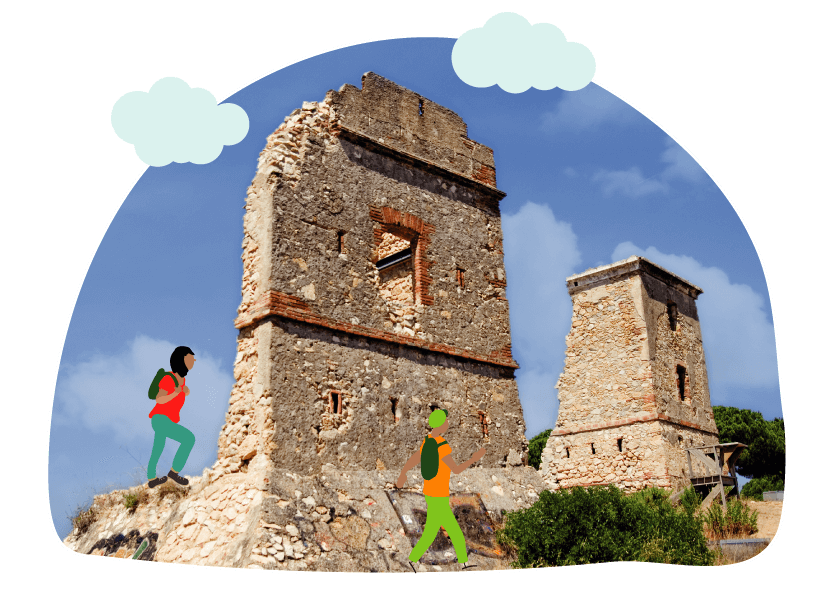Route 2: Santa Susanna - Pineda de Mar - Calella

CAN RATÉS WATCHTOWER

Find and draw the coat of arms of Can Rates and discover its meaning.

Find the name of all the towers of the town on the pastimes page.

DO YOU KNOW ABOUT WATCHTOWERS?
They have been known since the Ibero-Roman period, but they were really useful when the Catalan coast defended itself against the numerous pirate attacks during the 15th and 18th centuries.
The Guaita Towers were built in strategic locations and were easily accessible to each other. They served as a watchtower for observation, defence and also as a shelter:
Observation: They oversaw the territory and would inform the tower of any danger, the nearest castle or the population directly with visual signs, such as fire, smoke or mirrors.
Defence and refuge: The towers were provided with water, food and weapons (simple weapons and artillery pieces). The towers at the seafront were known as Artilled Towers or Towers of the Common, which were defensive towers with cannons to defend before disembarkation took place.
In addition to the Guaita Towers, some other defensive measures were taken, such as fortifying certain buildings (Church of Pineda de Mar, farmhouses ...) or building walls (Mataró).
Finally, there were more remote towers (isolated or attached to farmhouses) that also served as surveillance but, above all, as a shelter. Most of the preserved towers date from the 16th and 17th centuries.

THE PIRATES
Piracy is as old as trade: pirates were sea thieves, who would rob and kill for goods, which they would then sell to others. Sometimes they also took people to be sold as slaves or for good-paid ransoms.
The attacks on the Catalan coast date back to the Middle Ages which is confirmed by some of the oldest towers in the area: the Tower of the Enchanted of Caldes d'Estrac, the Castle of Montpalau de Pineda, the Castle of Malgrat or the Castle of Palafolls.
In this early period, the attacks were by the Genoese and the French, but also by the Turks or the Berbers from the Maghreb (hence, they have been popularly known as the "Moorish towers"). There were also employed pirates who were commissioned to steal something for someone else (phenomenon known as "the war of hearts").
Due to the many towers along the Maresme coast, it was popularly known as the Towered Coast. Santa Susanna has the most preserved towers in the Maresme:
TORRE DEL MAR
Of a cylindrical shape, it is the one with the largest diameter and the closest to the seaside.
The train station platforms are located at the foot of the tower, which perfectly illustrates the fusion of modernity and tradition of the city of Santa Susanna.
TORRE DE CAN BONET D'AVALL
A squared floor. From the end of the 15th century and restored in 1805.
TORRE DE CAN RATÉS
Semi-detached to a 17th century manor house. This whole complex, together with its huge swimming pool, several rooms and magnificent gardens are the perfect setting to host different cultural events -such as the Magic Fair- and pictorial exhibitions.
TORRE DE MAS GALTER
The floor is cylindrical and headless at the top. Located in Bou Street, next to Lola Anglada Square and Colomer Park. It is currently owned by the Pi family.
2. FOUNTAINS
3. PLATJA DE LES DUNES BUNKER
BUNKER AT LES DUNES BEACH
Built on October 6, 1938 by the Republican brigades, it is made of reinforced concrete and sits on a stone base. Inside there was a machine gun.
It belonged to a line of defensive elements (more than 50 bunkers) built by the Republican town councils of the Maresme region to guard the territory and defend themselves against the Nationalist planes that flew from Mallorca to bomb Barcelona during the Spanish Civil War (1936-1939).
Santa Susanna, then known as Montagut de Mar, had two fortifications: a larger one strategically located near the stream (now disappeared by the erosion of the sea), and this bunker at Les Dunes Beach.
During the 1940s, the Army kept them as observation posts to defend against a possible Allied invasion (World War II). During the 1950s, they became the homes of immigrant families. Little by little, they were forgotten until 2015, when the bunker was recovered as an historical landmark.
4. ROMAN AQUEDUCT

This aqueduct was also called the Devil's Bridge, how scary! The Roman road that reached Rome is where the National Road II is today.

What was the name of this long Roman road?
5. CASTELL DE MONTPALAU

Would you like to be nobleman as well? Draw yourself in the castle and give it a name.
![]()
MORE INFO
CASTELL DE MONTPALAU
Medieval fortress of square plant (some wall remains) with a cylindrical tower raised at the centre, at present in ruins.
Outside the walled enclosure there are the ruins of the old castle's chapel, dedicated to Saint Michael, documented since the 12th century.
The territory dominated by the Lord of Montpalau Castle extended from Arenys to Hortsavinyà. It was not, however, the permanent residence of the lord; it had a surveillance and defensive function and rather served to intimidate the peasantry.
HISTORY
Its origins are found in a document dated 1089 in which it was mentioned for the first time and belonged to the Count of Barcelona, but changed owners throughout the centuries, despite all being nobles:
- 1035: Umbert Odón (Umbert of Montseny or Sesagudes) and then passed on to his son, Guillermo Umbert.
- Guerau Ponç, Viscount of Girona, Lord of Cabrera and Àger.
- 1328: passed into the hands of the Cabrera family, who kept it until the 16th century.
- As we advance into the Middle Ages, once the danger of the Saracen invasion averts and for reasons of comfort, the fortress was abandoned and people arrived to settle on the plain.
- Civil wars of 1462-1472 and 1482-1486: peasants attacked the castle and it was taken by the General Regional Council, which gave it to Bertran de Armendariz.
- 1474: Anna de Cabrera, heiress of the viscounty, recovers the barony.
- 1574: Luis Enrique de Cabrera, Duke of Rioseco, sells the Viscounts of Cabrera and Bas -including the castles of Montpalau and Palafolls- to Francisco de Moncada i Cabrera, Count of Aitona and Osona.
- 1722: by marriage of the last royal of Montcada with the heir of Medinaceli, Montpalau Castle passes into the hands of this Castilian ducal house
6. MUSEU DEL TURISME – MUTUR

THE LEGEND OF THE "LLOPA DE CALELLA" (THE WOLF OF CALELLA)
The figure of La Llopa that participates in the correfoc ("fire-runs") of the town's patron saint festival originated in a local legend from the first half of the twentieth century that satirizes the inhabitants of Calella:
One day, an exhilarated Quico of Can Urrel-li explained to people sitting in the tavern that he had seen a wolf coming down Can Comas stream. After a few days, he saw another two wolves. Alarmed, the town decided to organise an expedition made up of peasants, volunteers and a few somatenes (local police) to drive the beasts away. In the middle of a potato field they found the two animals sunbathing. They shot them down, killing one and causing the other one to escape. The poor dead animal was exposed on the porch of the mayor's garden so that the whole town could go and see it.
A lady who lived on a farm between Sant Pol de Mar and Calella was desperate because she had lost one of her wolf dogs that guarded her property. When the landlord explained to her that a wolf had died in Calella, the woman feared the worst. Indeed, her dog Lea had died.
Since then, every time people from the surrounding villages talk about people from Calella, they exclaim "Calella, La Llopa!"
7. PARC DALMAU

This is the only one left, but how many shelters were built in Colella during the war?

Take a photo of yourself to prove you have found it.
